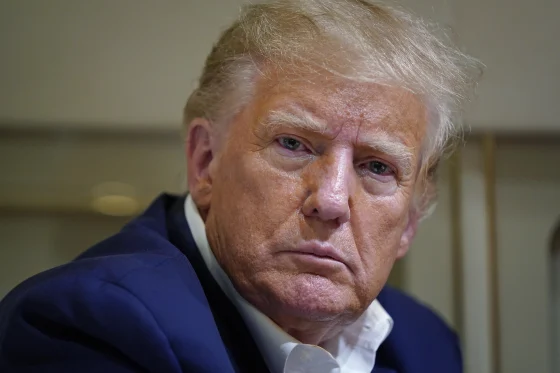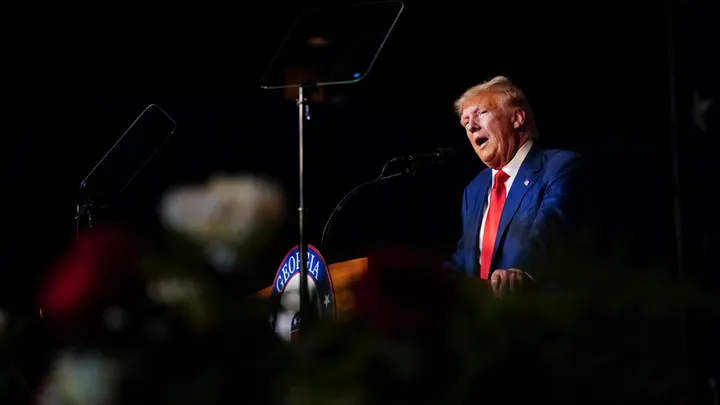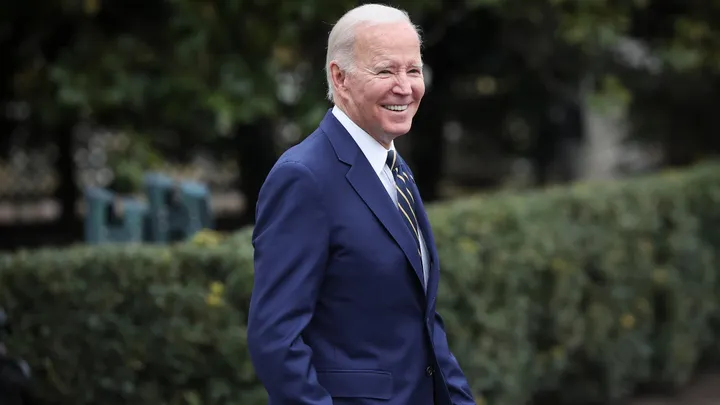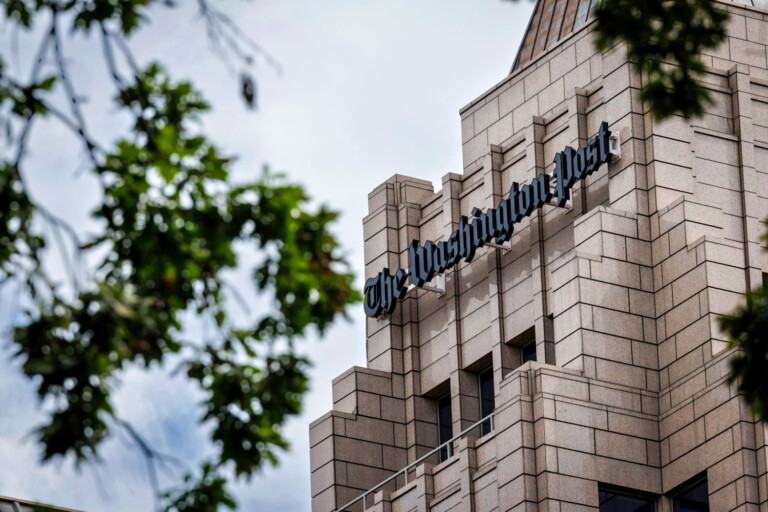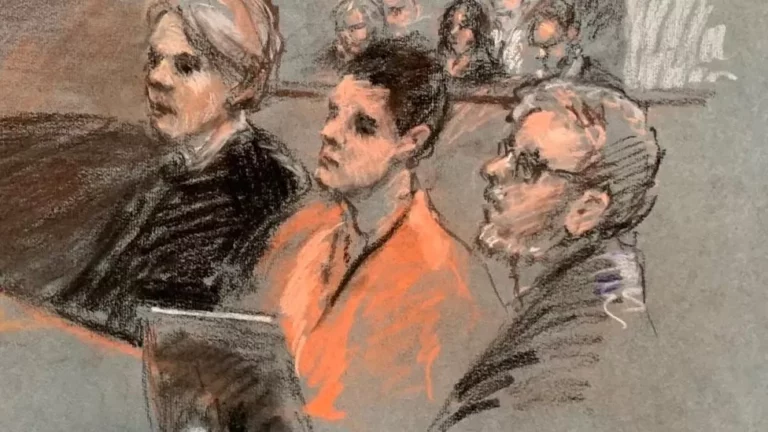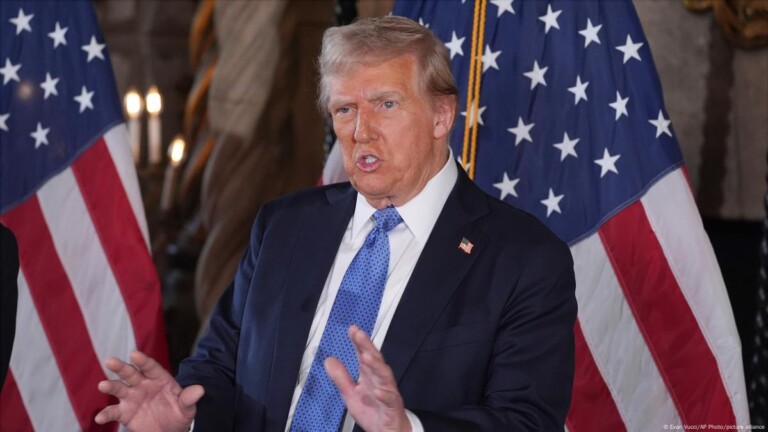Trump is the first U.S. president facing federal charges. Here’s what happened.
Former President Donald Trump appeared at a courthouse in Miami later Tuesday, making him the first U.S. president to face federal charges.
Trump is accused of breaking seven laws and charged with 37 felony counts, each related to his retention of hundreds of classified government documents, according to an indictment unsealed Friday.
The indictment accuses Trump of having illegally retained documents that detail some of the U.S.’s most closely guarded secrets, shared their contents with people without proper security clearance and stored them in insecure locations.
The charges are the culmination ofthe federal government’s multiyear efforts to retrieve the documents from Trump’s private residence in Palm Beach, Florida, which the indictment also alleges he tried to obstruct.
Trump has insisted that he did nothing wrong. The indictment “will go down as among the most horrific abuses of power in the history of our country,” Trump told a gathering of Georgia Republicans on Saturday.
Here’s a closer look at the origins of the investigation and what’s next:
From Pennsylvania Avenue to Mar-a-Lago
Weeks before he left the White House, Trump and his aides packed his personal belongings, including letters, cards and “hundreds of classified documents,” into boxes, according to the indictment.
They transported the boxes to Mar-a-Lago — Trump’s golf club and new residence — and at one point stored them in a ballroom and a shower, among other locations, according to the indictment.
Some of the boxes contained classified documents that detail sensitive U.S. defense information, including the U.S.’s possible points of vulnerability to a foreign military attack, the county’s potential plan to retaliate against such an attack and information about U.S. nuclear programs, the indictment alleges.
Prosecutors say Mar-a-Lago hosted events for “tens of thousands of members and guests” after Trump left the White House and was not an approved location to store classified documents, which the indictment says are “owned by” the U.S. government.
Trump has claimed that he declassified the documents before he left the White House. But the indictment argues that Trump knew his administration did not complete the accepted declassification process, and it accuses Trump of having shown the documents to people without security clearance, including a book author.
The indictment, which does not name the author, includes a transcript of the July 2021 conversation Trump had with the writer about a classified military document described as a “plan of attack” against another country. The conversation, which the indictment says was recorded with Trump’s knowledge, was first reported by CNN.
“See as president, I could have declassified” the document, Trump told the book author, according to the transcript. “Now I can’t.”
“Secret. This is secret information. Look, look at this,” Trump said.
A two-year investigation
In May 2021,the National Archives began asking Trump and his staff to return all missing presidential records, according to email communications between the archives and Trump’s lawyers that were later made public.
Two of Trump’s aides returned 15 boxes of records to the National Archives eight months later, in January 2022.The Archives soon determined that 14 of the boxes contained classified documents and referred their discovery to the Justice Department, the indictment says.
The FBI opened a criminal investigation in March 2022,and a grand jury issued a subpoena in May that required Trump to return all remaining classified documents in his possession, according to prosecutors.
Prosecutors say Trump tried to obstruct the FBI and grand jury investigations by furnishing only some of the subpoenaed documents, even as he said he was cooperating with the grand jury’s demand.
Trump also suggested that his attorney should “hide or destroy” the subpoenaed documents, and he instructed Walt Nauta — his personal aide, who also faces federal charges — to move and conceal boxes of classified documents from the FBI, the grand jury and Trump’s own attorney, the indictment said.
Investigators say theyobtained security video in July depicting Trump’s aides moving boxes of classified documents. The FBI obtained a warrant to search Mar-a-Lago, and in August it found 11 more sets of documents on the property, including some labeled “SCI,” which stands for highly classified “sensitive compartmented information.”
After the search,Trump and a chorus of other Republicans accused the Biden administration of having weaponized the Justice Department to persecute a political opponent.
Trump then claimed that the documents were shielded by executive privilege and requested that a judge appoint a “special master” to review them.
U.S. District Judge Aileen Cannon initially appointed a special master, a move many legal experts said was “deeply flawed.” The Supreme Court in October rejected Trump’s request to allow the special master to review the seized classified documents.
As the Justice Department continued to investigate his handling of classified documents and efforts to overturn his 2020 election loss, Trump announced another bid for the White House in November.
The same month,Attorney General Merrick Garland appointed Jack Smith, the former chief prosecutor for the special court in The Hague, as a special counsel presiding over the two investigations, saying the move was “in the public interest” because both Trump and President Joe Biden are candidates in the next election. Trump called the attorney general’s decision “appalling” and a “horrendous abuse of power.”
Six months after his appointment, Smith’s office unsealed the indictment charging Trump with 37 felony counts Friday.
The Office of the Director of National Intelligence opened a damage assessment into Trump’s handling of classified documents in August. It has not yet presented its findings to Congress, Sen. Marco Rubio, R-Fla., the vice chair of the Intelligence Committee, and a congressional aide with knowledge of the matter said last week.
Thecongressional aide said that lawmakers had been briefed on the documents found at Mar-a-Lago but that it remains unclear when the full assessment will be finished. The intelligence director’s office declined to comment.
What’s next?
Trump will make his first appearance in court before a magistrate judge in Florida on Tuesday.The trial date has not been set; Smith has vowed to try the case quickly.
The trial will be overseen by Cannon, the same judge who greenlighted Trump’s special master request, though she will not oversee Tuesday’s proceedings.
Some of the charges carry maximum sentences of 20 years in prison.
Other investigations are ongoing
Trump still faces other potential legal headwinds.
The Manhattan district attorney charged Trump in April in relation tohush money payments made to two women before the 2016 election. Trump pleaded not guilty to 34 felony counts of falsifying business records, and the trial is set to begin in March.
The Fulton County, Georgia, district attorney, Fani Willis, is investigating Trump’s attempts to overturn the 2020 presidentialelection in Georgia and has said she will announce whether she intends to charge Trump this summer.
Smith, the special counsel, is also still investigating the Jan. 6, 2021, attack on the U.S. Capitol and Trump’s attempts to overturn his 2020 election loss. Last week, a federal grand jury in Washington, D.C., subpoenaed Trump White House official Steve Bannon in connection with Smith’s investigation, two sources familiar with the matter said.
Source: nbcnews

